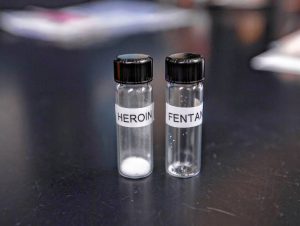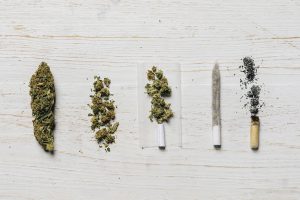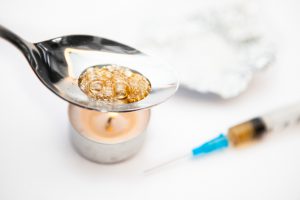 Marijuana reigns as the most commonly used illicit drug. The 2015 Quest Diagnostics Drug Testing Index™ also showed an increase in marijuana positivity in the U.S. workforce for the second consecutive year. Scientists continue to uncover new insights about marijuana use and its impacts as state legislation and popular opinion continue to shift.
Marijuana reigns as the most commonly used illicit drug. The 2015 Quest Diagnostics Drug Testing Index™ also showed an increase in marijuana positivity in the U.S. workforce for the second consecutive year. Scientists continue to uncover new insights about marijuana use and its impacts as state legislation and popular opinion continue to shift.
An article from the American Journal of Preventive Medicine, “Toking, Vaping, and Eating for Health or Fun: Marijuana Use Patterns in Adults,” analyzes data about how adults use marijuana and whether the reason for use was medicinal or recreational.
The authors said, “Although marijuana is thought to be primarily smoked, little is known about different modes of use. Marijuana can be consumed in multiple ways, including smoking or inhaling it in joints, bowls or pipes, bongs, water pipes, hookahs, and blunts (cigars filled with marijuana); eating or drinking it in food products and beverages; or vaporizing it.”
The study found that among current marijuana users:
- 10.5% reported medicinal-only use
- 53.4% reported recreational-only use
- 36.1% reported both types of marijuana use
Most current users smoke marijuana using a bowl or pipe (49.5%) or joint (49.2%). Other modes include the use of a bong, water pipe, or hookah (21.7%); blunts (20.3%); edibles/drinks (16.1%); and vaporizers (7.6%).
The Center for Substance Abuse Research’s CESAR FAX also featured some of this study’s data in a recent news release and chart highlighting how people consume marijuana when trying it for the first time. Smoking a joint, or marijuana cigarette, was the most prevalent form of first-time marijuana use for 89% of adults followed by inhaling the drug with a bong, water pipe, or hookah (49%) and smoking via a bowl or pipe (48%).
Although edibles only account for one-sixth of use, there is an emerging market for marijuana edibles in states where recreational use is permitted. Many people perceive marijuana-infused drinks, snacks and desserts to be less dangerous, increasing their attractiveness. Unfortunately, many users, especially teenagers, misjudge the potency and amount of THC (delta-9-tetrahydrocannabinol), the psychoactive chemical of cannabis, per serving leading to over-consumption.
This study succeeds at depicting the numerous available alternatives for marijuana users who look to start, continue or increase their drug use. Researchers persist with their plea for additional information and investigation about the patterns of marijuana use and long-term health consequences.
To learn more about drug testing, visit our website.
 Your Privacy Choices
|
Privacy Notices
|
Terms
|
Language Assistance / Non-Discrimination Notice | Asistencia de Idiomas / Aviso de no Discriminación | 語言協助 / 不䈚視通知
Your Privacy Choices
|
Privacy Notices
|
Terms
|
Language Assistance / Non-Discrimination Notice | Asistencia de Idiomas / Aviso de no Discriminación | 語言協助 / 不䈚視通知



















An article from the American Journal of Preventive Medicine, “Toking, Vaping, and Eating for Health or Fun: Marijuana Use Patterns in Adults,” analyzes data about how adults use marijuana and whether the reason for use was medicinal or recreational.
The authors said, “Although marijuana is thought to be primarily smoked, little is known about different modes of use. Marijuana can be consumed in multiple ways, including smoking or inhaling it in joints, bowls or pipes, bongs, water pipes, hookahs, and blunts (cigars filled with marijuana); eating or drinking it in food products and beverages; or vaporizing it.”
The study found that among current marijuana users:
Most current users smoke marijuana using a bowl or pipe (49.5%) or joint (49.2%). Other modes include the use of a bong, water pipe, or hookah (21.7%); blunts (20.3%); edibles/drinks (16.1%); and vaporizers (7.6%).
The Center for Substance Abuse Research’s CESAR FAX also featured some of this study’s data in a recent news release and chart highlighting how people consume marijuana when trying it for the first time. Smoking a joint, or marijuana cigarette, was the most prevalent form of first-time marijuana use for 89% of adults followed by inhaling the drug with a bong, water pipe, or hookah (49%) and smoking via a bowl or pipe (48%).
Although edibles only account for one-sixth of use, there is an emerging market for marijuana edibles in states where recreational use is permitted. Many people perceive marijuana-infused drinks, snacks and desserts to be less dangerous, increasing their attractiveness. Unfortunately, many users, especially teenagers, misjudge the potency and amount of THC (delta-9-tetrahydrocannabinol), the psychoactive chemical of cannabis, per serving leading to over-consumption.
This study succeeds at depicting the numerous available alternatives for marijuana users who look to start, continue or increase their drug use. Researchers persist with their plea for additional information and investigation about the patterns of marijuana use and long-term health consequences.
To learn more about drug testing, visit our website.